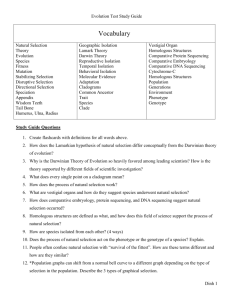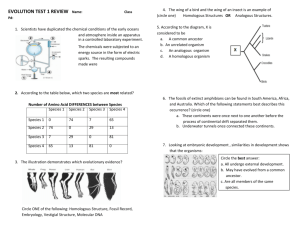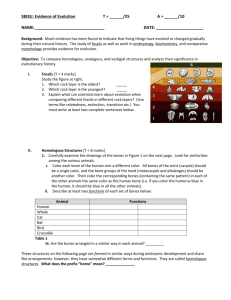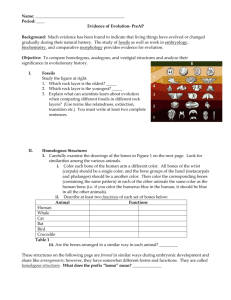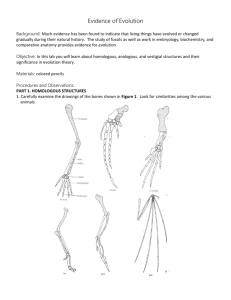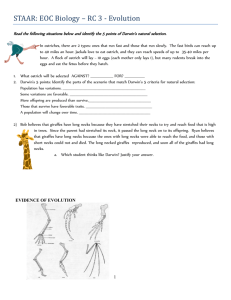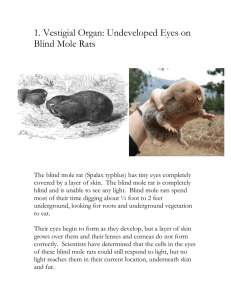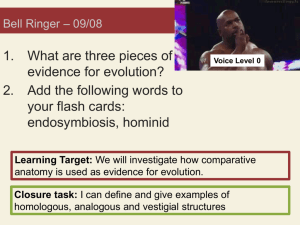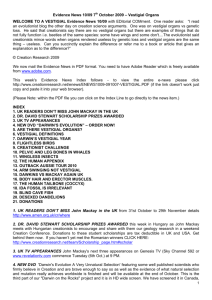Comparative Anatomy
advertisement
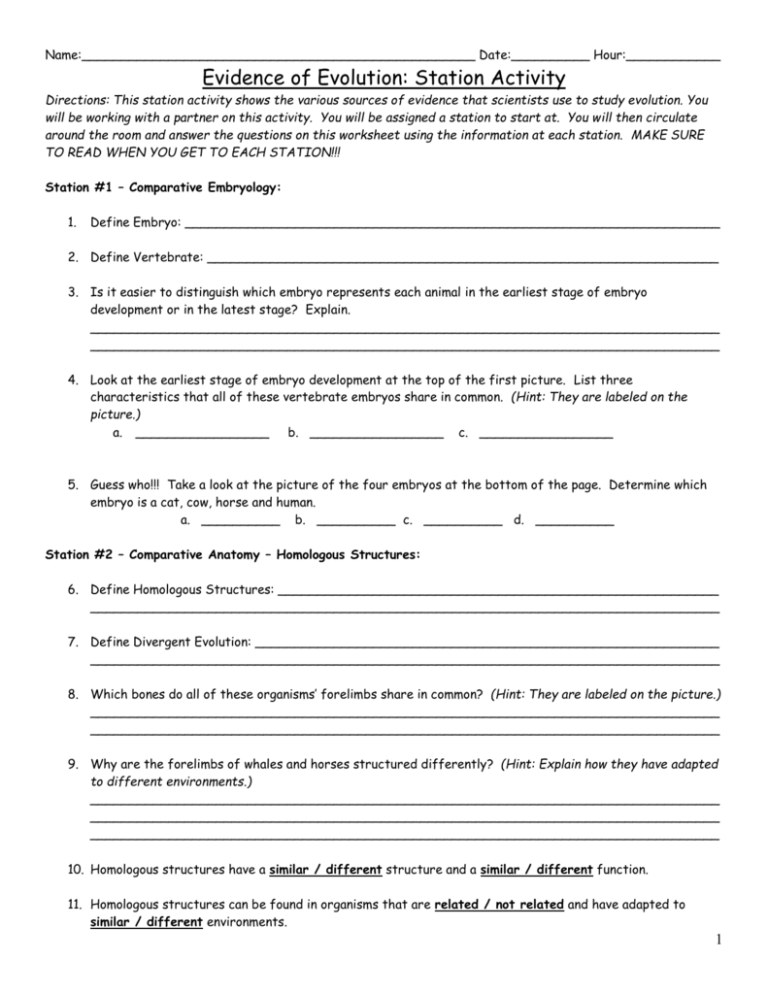
Name:__________________________________________________ Date:__________ Hour:____________ Evidence of Evolution: Station Activity Directions: This station activity shows the various sources of evidence that scientists use to study evolution. You will be working with a partner on this activity. You will be assigned a station to start at. You will then circulate around the room and answer the questions on this worksheet using the information at each station. MAKE SURE TO READ WHEN YOU GET TO EACH STATION!!! Station #1 – Comparative Embryology: 1. Define Embryo: ____________________________________________________________________ 2. Define Vertebrate: _________________________________________________________________ 3. Is it easier to distinguish which embryo represents each animal in the earliest stage of embryo development or in the latest stage? Explain. ________________________________________________________________________________ ________________________________________________________________________________ 4. Look at the earliest stage of embryo development at the top of the first picture. List three characteristics that all of these vertebrate embryos share in common. (Hint: They are labeled on the picture.) a. _________________ b. _________________ c. _________________ 5. Guess who!!! Take a look at the picture of the four embryos at the bottom of the page. Determine which embryo is a cat, cow, horse and human. a. __________ b. __________ c. __________ d. __________ Station #2 – Comparative Anatomy – Homologous Structures: 6. Define Homologous Structures: ________________________________________________________ ________________________________________________________________________________ 7. Define Divergent Evolution: ___________________________________________________________ ________________________________________________________________________________ 8. Which bones do all of these organisms’ forelimbs share in common? (Hint: They are labeled on the picture.) ________________________________________________________________________________ ________________________________________________________________________________ 9. Why are the forelimbs of whales and horses structured differently? (Hint: Explain how they have adapted to different environments.) ________________________________________________________________________________ ________________________________________________________________________________ ________________________________________________________________________________ 10. Homologous structures have a similar / different structure and a similar / different function. 11. Homologous structures can be found in organisms that are related / not related and have adapted to similar / different environments. 1 Name:__________________________________________________ Date:__________ Hour:____________ Station #3 – Comparative Anatomy – Analogous Structures: 12. Define Analogous Structures: _________________________________________________________ ________________________________________________________________________________ 13. Define Convergent Evolution: __________________________________________________________ ________________________________________________________________________________ 14. Are birds, bats and insects closely related to each other? ____________________________________ 15. Are bird, bat and insect wings similar in structure? Explain your answer using what you see in the picture. ________________________________________________________________________________ ________________________________________________________________________________ 16. Why have birds, bats, and insects all evolved to have wings? (Hint: Think about convergent evolution.) ________________________________________________________________________________ ________________________________________________________________________________ 17. Analogous structures have a similar / different structure and a similar / different function. 18. Analogous structures can be found in organisms that are related / not related and have adapted to similar / different environments. Station #4 – Comparative Anatomy – Vestigial Structures: 19. Define Vestigial Structures: __________________________________________________________ ________________________________________________________________________________ 20. How do vestigial structures show that evolution has occurred in a species? ________________________ ________________________________________________________________________________ 21. Explain how the wing structures of the kiwi bird and the ostrich are different from the wing structure of the eagle. (Hint: Take a look at the bird skeleton pictures and reflect on the size of the wings in each organism.) ________________________________________________________________________________ ________________________________________________________________________________ 22. Why might kiwi birds and ostriches have vestigial wings? Explain why these birds do not need to be able to fly in their habitats. ________________________________________________________________________________ ________________________________________________________________________________ 23. Why does an eagle need to have functional wings? Explain your response. _________________________ ________________________________________________________________________________ 24. Vestigial structures in an organism have no purpose / an important purpose. 25. Vestigial structures in an organism are increased / reduced in size. 2 Name:__________________________________________________ Date:__________ Hour:____________ Station #5 – Comparative Biochemistry: 26. How are DNA and protein sequences used as evidence for evolution? _____________________________ ________________________________________________________________________________ 27. For each primate in the amino acid sequence chart at station #5, count the number of amino acids that are different from the human sequence. Record these numbers in the data table below. Primate # of Amino Acids Different from Humans Baboon Chimpanzee Gorilla Lemur 28. Use the information in the data table from question #27 to answer the following questions. a. Which two primates are most closely related to humans? ___________ ___________ b. Which two primates are the least closely related to humans? ___________ ___________ 29. Now take a look at the evolutionary tree. Does the information in this image support your answers to question #28? Explain. ________________________________________________________________________________ ________________________________________________________________________________ ________________________________________________________________________________ Station #6 – Fossil Evidence: 30. Explain how the fossil record is used as evidence for evolution. _________________________________ ________________________________________________________________________________ 31. Define Derived Traits: _______________________________________________________________ ________________________________________________________________________________ 32. Define Ancestral Traits: _____________________________________________________________ ________________________________________________________________________________ 33. Discuss how an ancient Glyptodont fossil is different from a modern armadillo. What changes have evolved over time? List several observations. ________________________________________________________________________________ ________________________________________________________________________________ ________________________________________________________________________________ 34. Discuss how the ancient Eohippus is different from the modern horse. What changes have evolved over time? List several observations. ________________________________________________________________________________ ________________________________________________________________________________ ________________________________________________________________________________ 3 Name:__________________________________________________ Date:__________ Hour:____________ 4
